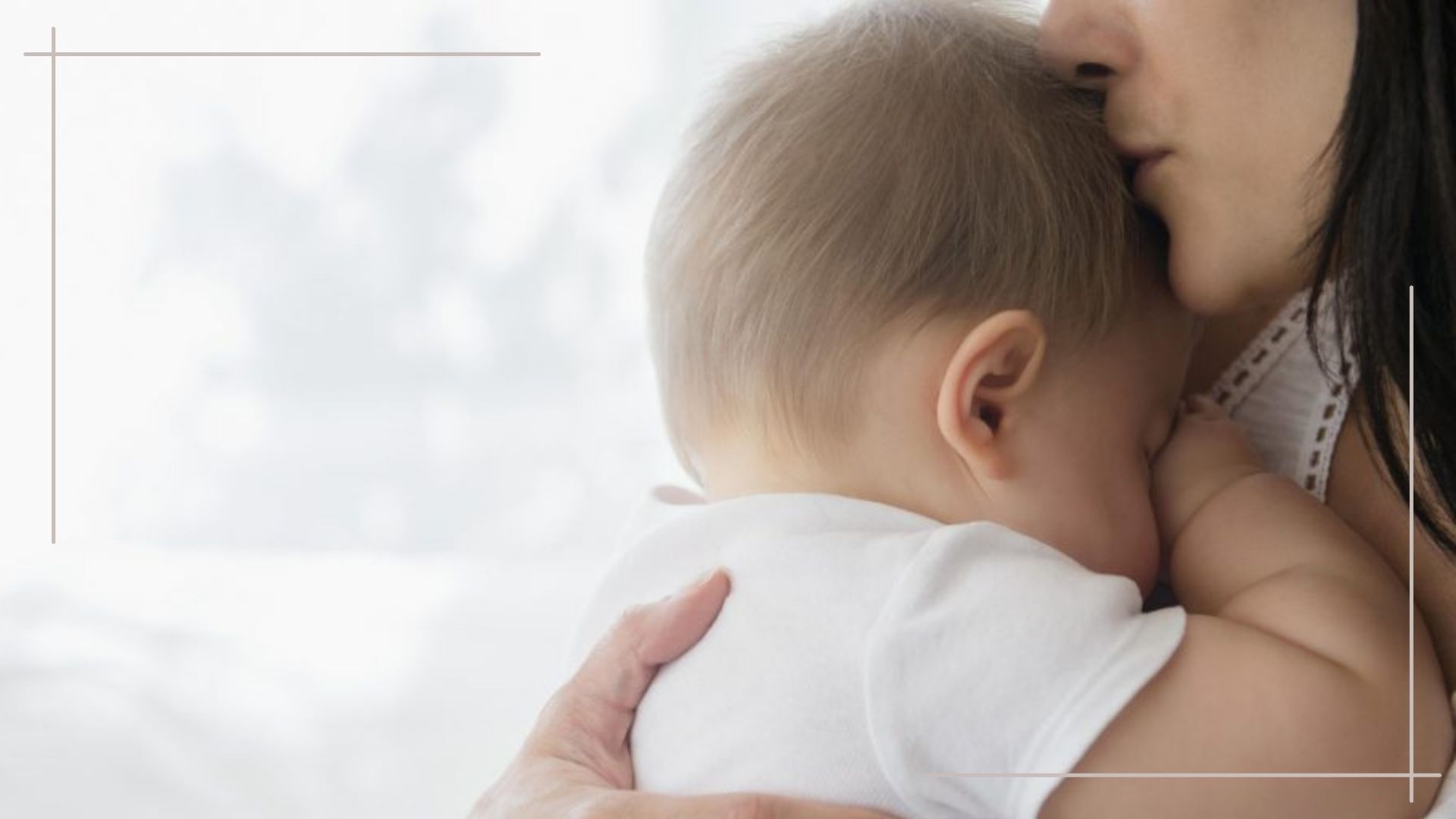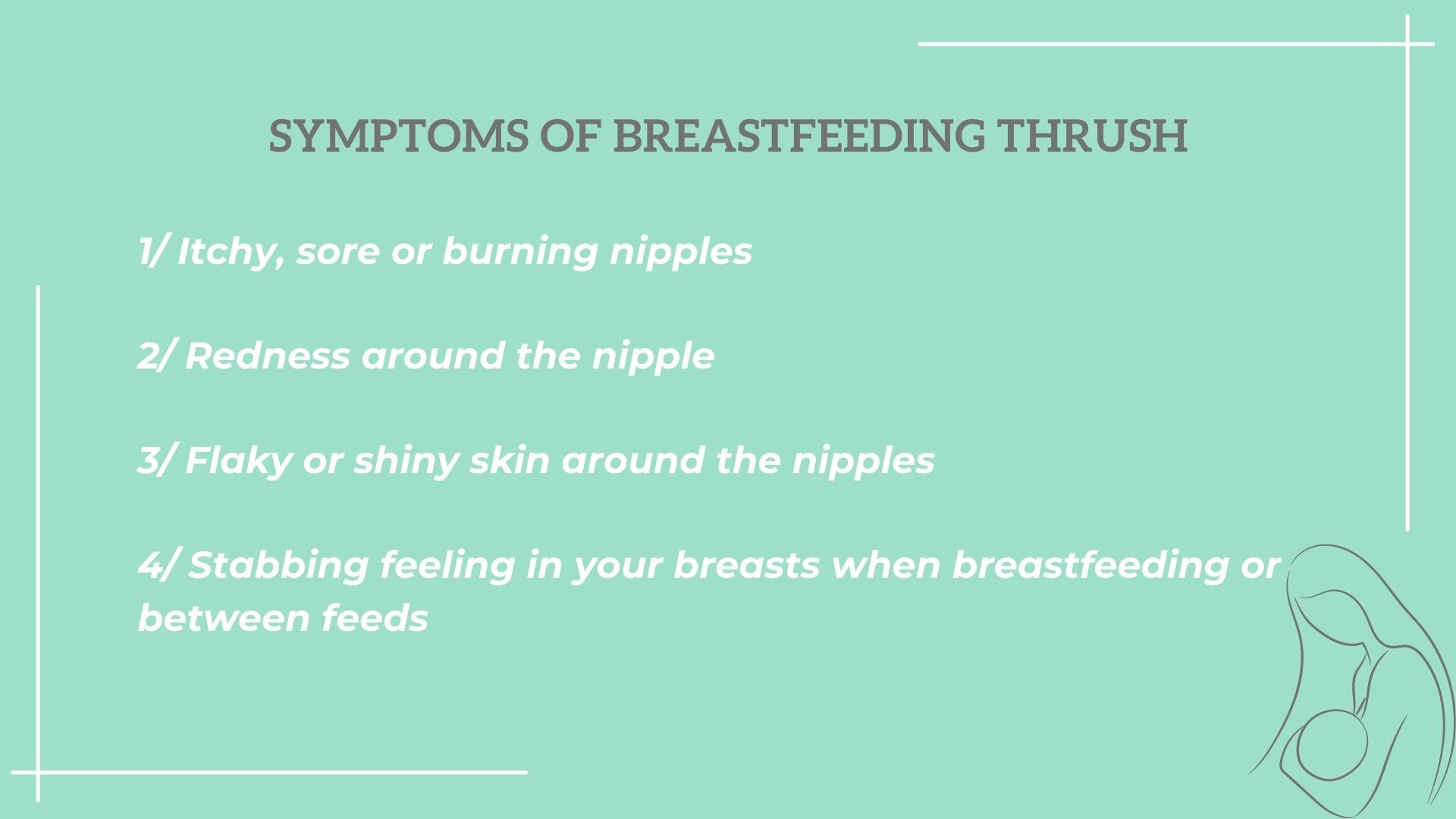Breastfeeding and thrush: Symptoms, treatment and how to prevent it
All you need to know about thrush and breastfeeding


Breastfeeding thrush – also known as nipple thrush – while uncomfortable and upsetting can be easily treated with medication.
If you are breastfeeding your child, t's worth noting that breastfed babies can also develop oral thrush in their mouths. And, what's more, mum and baby can pass thrush on to each other, this can reoccur if not treated. Midwife and mum-of-one, Marie Louise tells us, "Unfortunately, some mums mistake thrush for nipple trauma assuming they have a poor latch. Most people only know about vaginal thrush and don’t realise that you can, in fact, get thrush in the mouth or even gut as the yeast infection likes to grow in warm and moist places."
One of the reasons why some nursing mothers develop breastfeeding pain and thrush is because childbirth and parenting a newborn is challenging on the body. This can lower the immune system, which makes new mums vulnerable to infections. And if the mum or baby needs antibiotics or corticosteroids these drugs can create the right environment for thrush to take hold.
And, while it's your choice, if you don't want to stop breastfeeding know that you don't have to, there are treatments to help, keep reading...
How do I know if I have breastfeeding thrush and what does it look like?
Midwife Marley Hall explains that, itchy, sore or burning nipples, redness around the nipple, flaky or shiny skin around the nipples and a stabbing feeling in your breasts are the main symptoms of thrush in mothers. Thrush is caused by a yeast known as candida albicans that thrives in warm, moist conditions.
It generally affects the genital area and vagina (here are some home remedies for thrush which may help with that) but it can also affect breastfeeding women if their nipples become sore or cracked. This enables the candida fungus to penetrate the skin.
Symptoms of thrush in a mother
- Itchy, sore or burning nipples
- Redness around the nipple
- Flaky or shiny skin around the nipples
- Stabbing feeling in your breasts, either when you’re breastfeeding or between feeds

'Most women won’t know or consider nipple thrush as a possibility because it is not something that's often discussed,' says Marie Louise, aka The Modern Midwife.
GoodtoKnow Newsletter
Parenting advice, hot topics, best buys and family finance tips delivered straight to your inbox.
It's unlikely to be thrush if you've always experienced pain while breastfeeding. If you have a fever or a red patch on one or both of your breasts that's warm to the touch, you may have mastitis symptoms and it's important to see a doctor quickly.
Symptoms of thrush in a baby
If your baby has developed thrush you may notice a few symptoms. 'The first signs of thrush are visible white patches inside of the cheek, on the baby’s tongue or gums,' says Marie Louise. You may also notice a white film on your baby's lips or the roof of their mouth.
'Typically, babies who have thrush will have a white coat on their tongue that's not as a result of a feed as it can’t be scraped off,' adds Marley.
You may also notice other signs. 'Your baby may become fussy at the breast and pull away due to the discomfort. And they may also get nappy rash symptoms that won’t clear up,' says Marie Louise. A nappy rash that won't clear up is another indication of a yeast infection.
Is it safe to breastfeed with thrush?
Yes. 'You can continue to breastfeed with thrush if you're able to,' says Marie Louise. 'Overall it's safe to continue breastfeeding and advisable if you can, though it depends on how bad the infection is and how painful it is.' You might be left with no choice but to stop breastfeeding, at least for a while.
Marley suggests that while it's fine to breastfeed in most cases, 'it should be treated straight away otherwise the infection will continue to be passed between you and your baby.'
If your baby can't latch on it's worth continuing to express milk. 'If you feed your baby expressed milk from a bottle either with a pump or by hand this will help to maintain good milk supply,' says Marie Louise. 'Plus your breasts may become full and not only will this be uncomfortable but it may also lead to mastitis, so it's important to extract milk from the breasts.'
How to get rid of breast thrush and treat it
If you suspect that you or your baby have thrush tell your health visitor or GP. They will examine you and may take a swab from your baby's mouth or your nipples to confirm it. They will also check that the pain or discomfort isn't being caused by another issue.
Generally, mothers will want to get breast thrush treated quickly so it doesn't get in the way of their baby feeding. The quickest route is a topical cream, which can be prescribed by a medical professional or bought over the counter at pharmacies. If the thrush is severe, you may be prescribed oral medication such as fluconazole.
You may have heard that you can scrape thrush off your baby's tongue. This is not advised as it may cause bleeding.
Medication
'The most effective way to treat nipple thrush is to use medication from your doctor or pharmacy,' says Marley.
'There are a variety of medications available to treat thrush [these include miconazole, nystatin and clotrimazole] but your GP is the best person to discuss medication options with,' says Marie Louise.
'Your baby should also be treated. A GP will be able to examine them and prescribe drops for the tongue,' says Marley. Alternatively, if your baby is 4 months old or older you can buy over the counter mouth gel to treat your baby's oral thrush. Try Daktarin Sugar Free 2% Oral Gel (£5.99 for 15g, Lloyds Pharmacy).
Diet
If you're nursing, a diet of calcium-rich food, healthy fats, fibre, fruit and veg and healthy snacks can help. A varied and healthy breastfeeding diet can help you stay fit and well. And, if you get breastfeeding thrush, eliminating certain foods can make a difference. For tips see our advice, below, on what diet to follow to prevent thrush.
Supplements
'Some people use supplements such as garlic or zinc, but more evidence on efficacy is needed,' advises Marley. Try Vitabiotics Pregnacare Breastfeeding supplement from Boots (£16.50 for a 28 day supply), which contains zinc and other vitamins and minerals suitable for nursing women.
'Antifungal supplements, prebiotics and probiotics are available from many health food stores but it's important to double check these are safe to take while breastfeeding,' says Marie Louise. 'Although they can support health, on occasions the results of supplements can be overstated or not backed by evidence so it's important not to replace taking supplements with medical advice,' she says.
How to prevent breastfeeding thrush
Thrush is highly infectious and is passed on easily, so if you have it treat it quickly. Practice good hygiene and wash your hands after breastfeeding and treating yourself or your baby with medication. If you're pregnant, it will help to nip any yeast infection in the bud.
'If you have vaginal thrush during pregnancy, make sure it is treated. It can transfer to the baby during the birth and subsequently your nipples,' advises Marley.
Hygiene
Here are our midwives' top tips for good hygiene to prevent thrush, or to prevent getting reinfected:
- Ensure you wash your hands before and after breastfeeding. 'I know we are all well up to speed with that thanks to Covid!' says Marie Louise.
- If you use a pacifier or bottles, make sure they're sterilised after each use.
- Sterilise any toys your child puts in their mouth.
- Wear cotton maternity bras and change them daily.
- If you use breast pads, try to wear disposable ones. If not wash your breast pads and bras in a hot wash after each use.
- Stay topless for a little while to allow your nipples to breathe.
- Keep your nipples dry between feedings.
- Avoid sharing towels with other family members.
- Avoid storing expressed milk. 'Even if frozen, there’s still a possibility that the baby could be re-infected once thawed,' says Marley.
- Reduce stress if possible. 'Chronic stress is thought to adversely affect your immune system and therefore allow imbalances within the body,' says Marie Louise.
- Thrush can't survive in an acidic environment so you may want to consider rinsing your nipples in a weak solution of vinegar (2tsp of distilled white vinegar in 160ml water) a few times a day.
Diet
To prevent a repeat of breastfeeding thrush, both our midwives recommend that you eat a balanced diet and reduce your sugar intake (try this sugar-free diet plan). Avoiding dairy, refined carbohydrates and processed food can also help. Some mothers find that limiting yeasty foods such as bread, Marmite, mushrooms and wine may limit further attacks.
'Avoid foods that appear to worsen your symptoms,' advises Marie Louise. 'Foods that may help are non-starchy veggies such as greens, garlic, fresh ginger tea, coconut oil and beans. Although these are not considered to be official treatments they are thought to perhaps help fight yeast infections,' she says. 'Eating foods that contain lots of good bacteria such as Lactobacillus acidophilus can help [you'll find this in fermented foods such as kefir, kimchi, sauerkraut and yogurt]. And drink plenty of water to keep well hydrated.'
A word of warning: 'It's really important that you discuss any significant changes to your diet with a healthcare professional. For example, if you cut out dairy you need to ensure that you're getting nutrient-dense alternatives,' says Marie Louise.
A breastfeeding supplement, such as the previously mentioned Vitabiotics Pregnacare, can also give your body a boost at this time.
Video of the week:

Debra Waters is an experienced online editor and parenting writer. She also has a strong background on health, wellbeing, beauty, and food. She currently writes for Goodto and Woman&Home, and print publications Woman, Woman’s Own, and Woman’s Weekly. Debra has written for What to Expect, Everyday Health, and Time Out. In addition, she has had articles published in The Telegraph and The Big Issue.